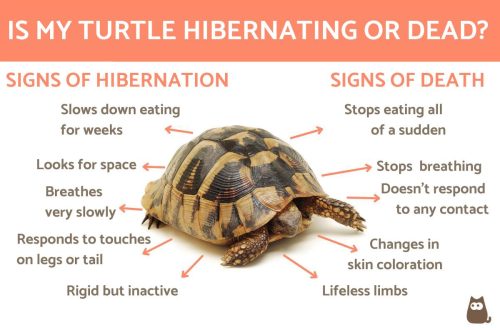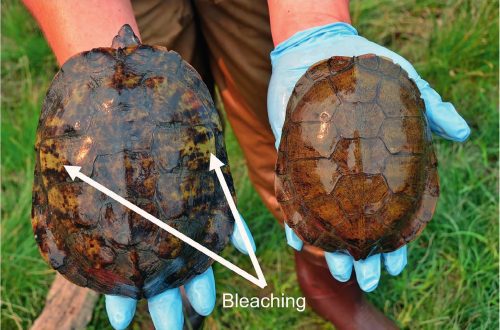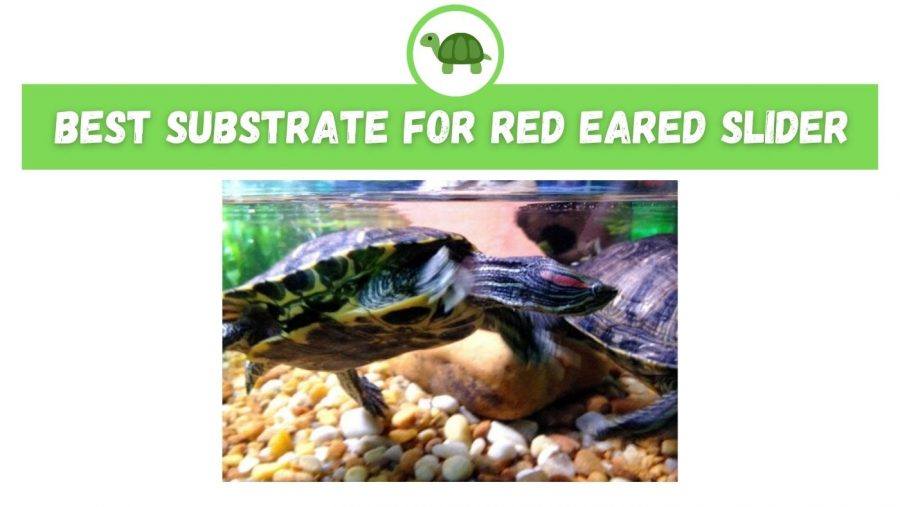
אַלדזשי און באָדן פֿאַר אַ רויט-ירד טשערעפּאַכע אַקוואַריום
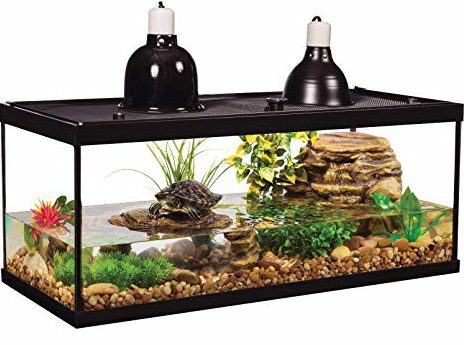
The owners think over the filling for the aquarium of the red-eared turtle based on the preferences of the pet in its natural habitat. The bottom is covered with soil, aquatic plants are selected. In order for the environment of the aquaterrarium to please a person and a pet, it must be safe and practical, therefore an attentive and thoughtful approach to details is important.
באָדן סעלעקציע
It is not necessary to line the ground for the red-eared turtle. The animal can do without it, since it does not feel the need to dig in at the bottom. You don’t have to stop using it. The soil is needed in the aquarium as a natural filter, as it retains small particles of dirt at the bottom. Bottom decking is necessary for some types of algae. It affects the development of beneficial bacteria, which is important for the formation of healthy microflora in the water.
If the soil is laid in the form of a slope from the back wall of the aquarium, or if you choose larger stones for the far part, the container will seem more voluminous.
When choosing a soil, you should pay attention to its composition. It is not recommended to use an artificial substrate. Toxic substances can get into the water from plastic elements. For the same reason, colored mixtures should be avoided. Pets can break glass balls in their beaks and injure themselves.
Natural flooring that is best for the turtle:
Limestone soils release potassium into the liquid. This can increase the hardness of the water. With an excess of elements, a white coating forms on the reptile shell and the surfaces of the aquarium. Therefore, shell rock, marble and coral sand should be used carefully.
You can put an even layer of river sand in the aquarium of the red-eared turtle. It should be borne in mind that the grains clog the filter, they can cake and rot. Such soil complicates the care of the aquaterrarium, but is safe for reptiles.
Suitable stones for the ground should be:
- without sharp edges and edges;
- ראַונדיד
- more than 5 cm in diameter.
Small turtles can get stuck under large stones, so it is best for young turtles to refrain from using them.
Before laying the flooring on the bottom, it is recommended to rinse it under running water. Large volumes are more convenient to handle in batches. The procedure is repeated until the water flows clear and clean. Non-certified materials can be disinfected before washing. To do this, the soil is boiled for 40 minutes in boiling water, or kept for an hour in the oven at a temperature of 100 ° C.
Do you need living flora
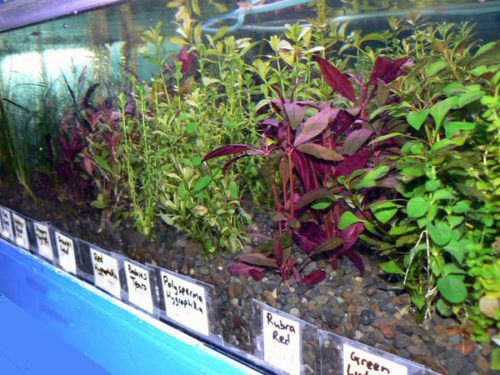
Some of the plants can be poisonous to pets, while others can be beneficial. Red-eared turtles need algae in their diet as it contains minerals, vitamins and iodine, but many of them can become a nuisance weed. Young individuals are indifferent to grass, so they will not interfere with the development of spirogyra. It interferes with the development of other plants, and quickly covers the bottom. Little turtles can get entangled in a green carpet.
Some algae, such as blue-green algae, are classified as pests. Their occurrence usually occurs without human intervention, in violation of the requirements for lighting and water purification. Staying in an infected aquarium is harmful for a pet.
Algae are more readily eaten by older red-eared turtles. They are happy to use spirogyra and cladophora, favorably relate to plants. It is difficult to plant delicacies in an aquaterrarium, as reptiles consume greenery faster than it has time to develop. Many owners prefer to grow duckweed and other plants for the red-eared turtle in a separate container.
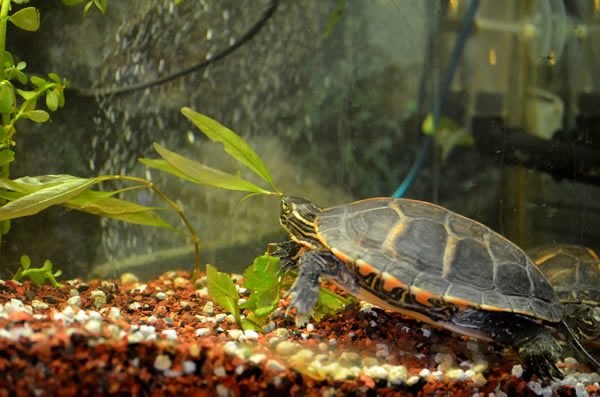
Reptiles are active in the water. Even when plants are not attractive for red-eared turtles as food, they rarely take root in an aquarium. The pet digs out those that take root in the ground, tears leaves and stems with its beak. Green tufts settle on the filter and pollute the water, which is why cleaning has to be done more often.
In a wide aquarium, you can enclose a small area with a net, and plant algae behind it so that the pet reaches some sheets, but cannot destroy the stems and roots.
Since algae is not necessary for the red-eared turtle, many owners refuse to grow live flora near the reptile. Pet stores offer plastic and silk plant counterparts. Herpetologists do not recommend installing artificial greens so that the bitten plastic does not enter the esophagus.
What plants can be planted in an aquarium
When choosing flora for a red-eared turtle pool, you need to consider the impact of each plant on the reptile’s body and the aquatic environment. There should be no poisonous herbs in the aquarium, even if the pet is indifferent to them.
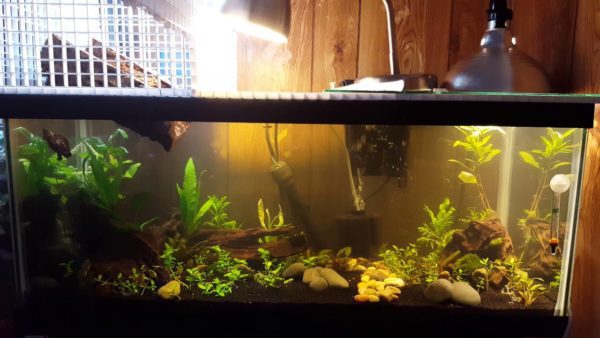
Elodea is poisonous, but often inhabits turtle aquariums. Toxic substances are contained in the juice of the plant, but their concentration is low. Elodea is a bad neighbor for the red-eared turtle, although a small amount of leaves eaten is not capable of causing serious damage to the body. It is not recommended to prune the plant in water to minimize the release of juices into the aquarium.
Edible plants that are suitable for the same conditions as turtles:
- hornwort;
- caroline cabomba;
- Eichornia is great.
An important parameter of plants for the neighborhood with a pet is practicality. Hygrophila magnolia vine in a freshwater reptile aquarium receives favorable conditions for growth. The plant is safe for the turtle and does not adversely affect the water. If the pet does not show interest in the green leaves of lemongrass, it can be safely grown. Eichornia blooms beautifully and has a high ability to neutralize the fruits of the metabolism of the inhabitants of the aquaterrarium. Water hyacinth does not tolerate the neighborhood with an active reptile and rarely takes root.
Plants and soil for red-eared turtles
3.4 (קסנומקס%) 28 וואָוץ



